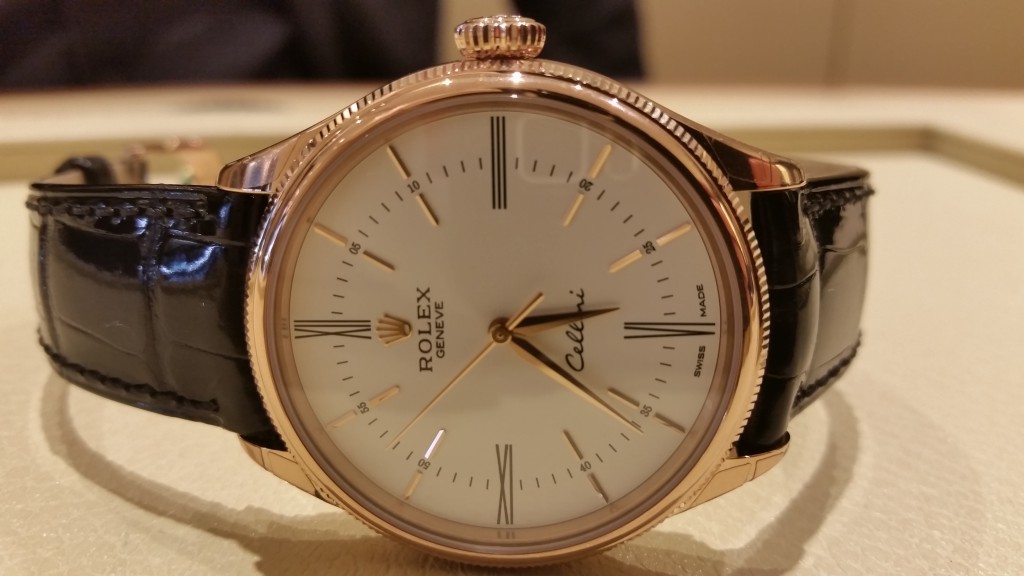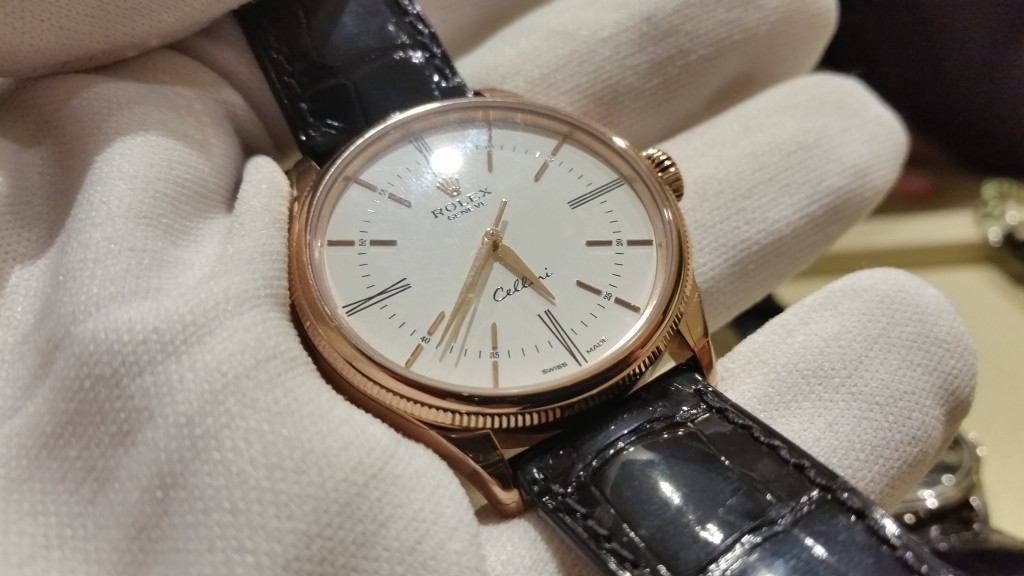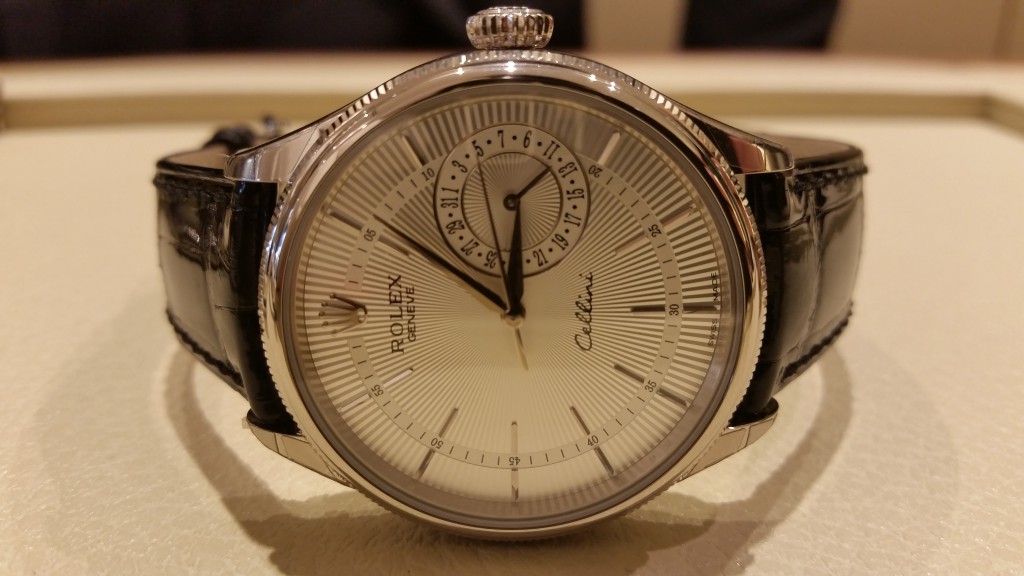By Harlan Chapman-Green
Recently I had the chance to get a closeup look of the Rolex Cellini dress watch. It was revealed to the world at BaselWorld last year and completes the Rolex range nicely. Before the Cellini there were essentially two different categories in the Rolex range that you could walk into any high street authorised dealer and buy. First there were the sports watches, these are the Rolexes everyone’s familiar with, models such as the Daytona and the Submariner spring to mind. The sport watches are what defined Rolex as a practical yet luxurious watch brand. Then there were the dressier pieces that, while still used a metal bracelet, were more classically styled and looked very subtle with a full tuxedo or relaxed weekend attire. Pieces such as the DateJust and the DayDate (or as it’s popularly known, the President). Now though Rolex has a definitive opposite to the Submariners.

Then there’s the dial of the watch. This is the plain version of it (there’s also a guilloche version, which we’ll see later), it’s a lovely creamy ivory colour and compliments the watch well. Out of all the different models, this combination of plain dial and Everose gold is my favourite because of the warmth generated by both the gold and the creamy dial. The plain dial immediately is at a disadvantage as there’s less interesting details to stare at (and believe me, there was an awkward 5 minutes where I was lost in the guilloche). Therefore, Rolex added some interesting details to it. These can be seen at 3 O’Clock, 6 O’Clock, 9 O’Clock and 12 O’Clock.

They’re long and thin Roman numerals and they add a certain charisma to this piece. This is because they keep your eyes on the dial, where the prize is. When I say prize, I mean it’s the only one as all three versions of the Cellini have an un-engraved polished bubble back and are therefore not very interesting. They do give a large playground to those who want to engrave the watch with their own design or a loving message to a significant other. Also, on all three watches the crown has the Rolex logo embossed and is quite large, by which I mean it’s at the middle of Patek and Zenith sizes.

Next up is the Cellini date. This model is presented in white gold, and it’s not got a different name because white gold doesn’t fade. There’s a beautiful lustre to this timepiece as it’s the probably the quintessential watch in the range, mostly because of the prim white gold but also because of the guilloche dial. Then at 3 O’Clock there’s the rotary date indicator, it’s a simple affair showing only odd numbers with a simple stick hand, as opposed to using the same shape hands as the hours and minutes. I should explain how Rolex works when it comes to materials, parts and research. Rolex has its own treatment plant where it takes gold and platinum ore and processes it until it meets the requirements Rolex demands. That’s right, unlike most other companies in the industry Rolex processes all of its own metals. This means they don’t have to share the recipes used to make materials such as Everose gold. There are four main plants to Rolex, with three in the same city. The main headquarters is located in Acacias in Geneva. This is where the administration of the company is, the aftercare department is located there as well as final assembly and testing. It’s the main hub for Rolex operations everywhere. Then there’s Plan-Les-Ouates which is also in Geneva. Plan-Les-Ouates is the site I mentioned earlier.



